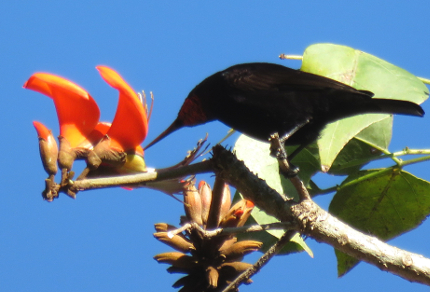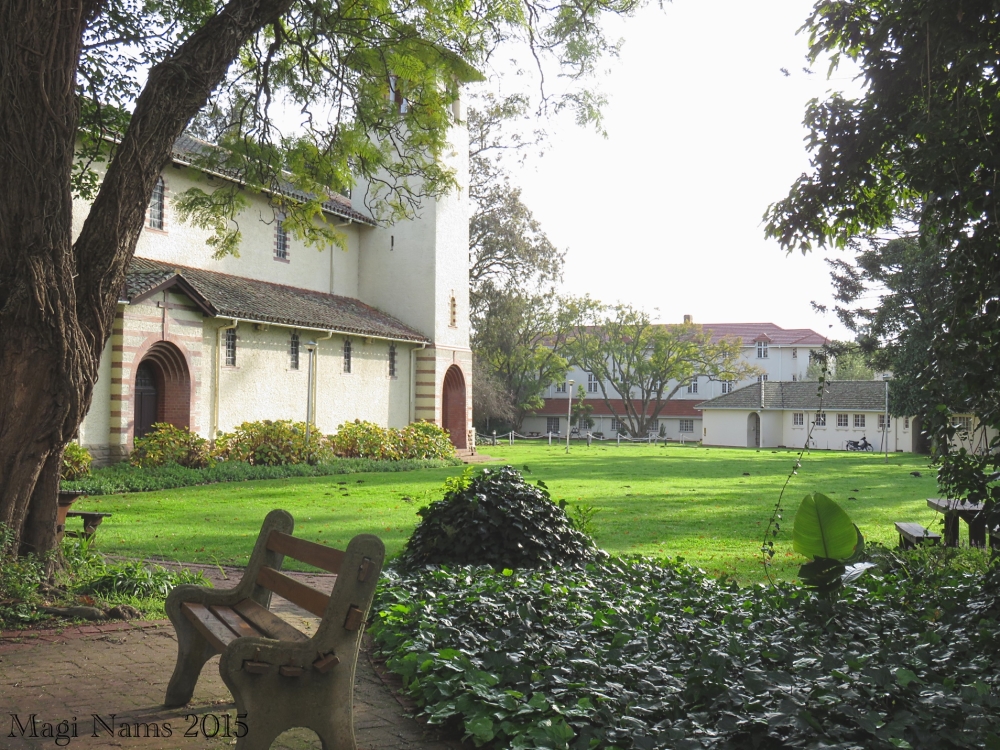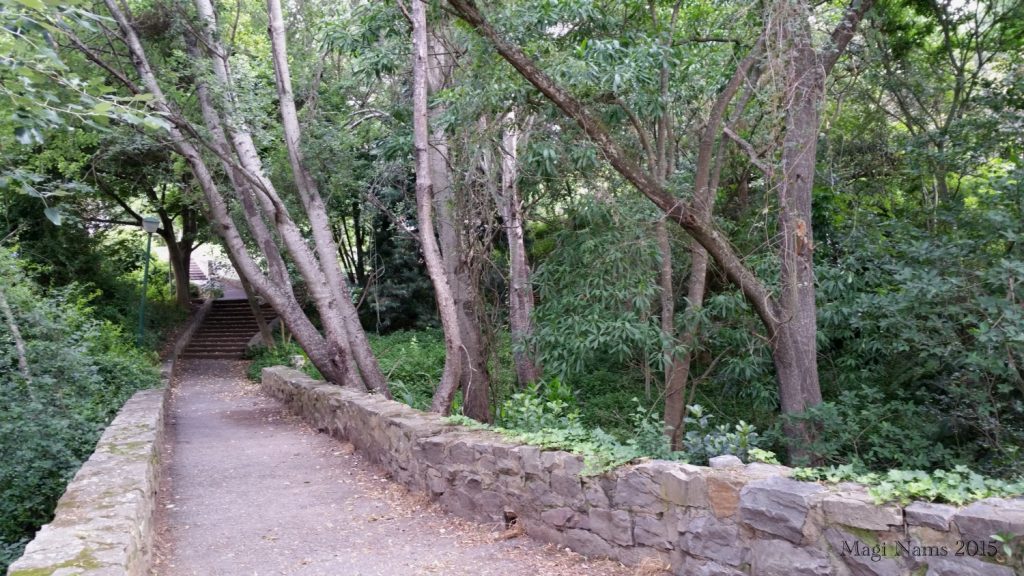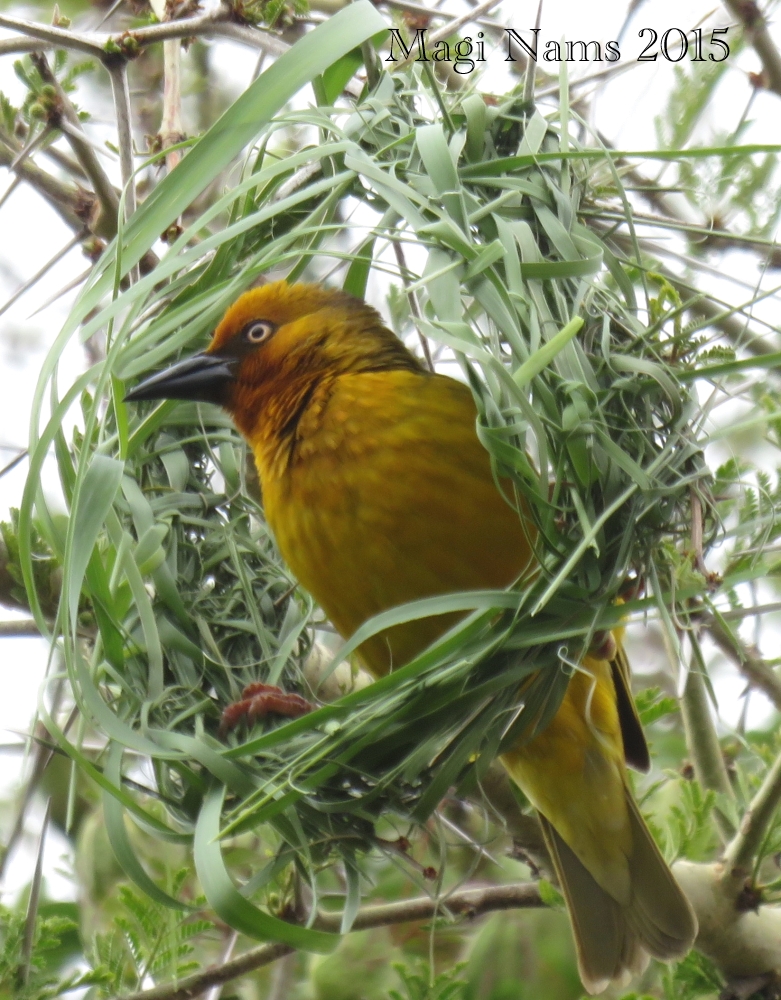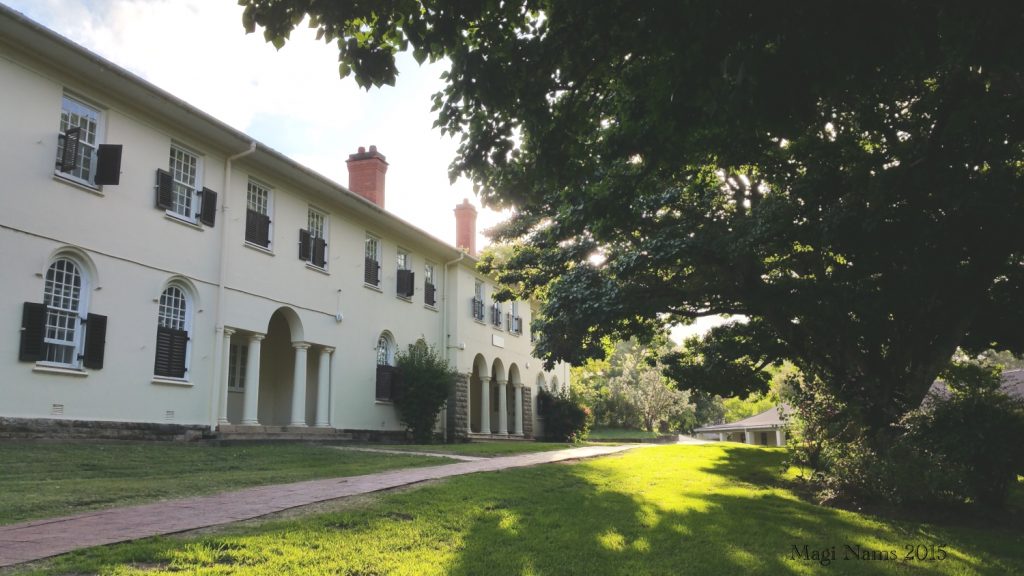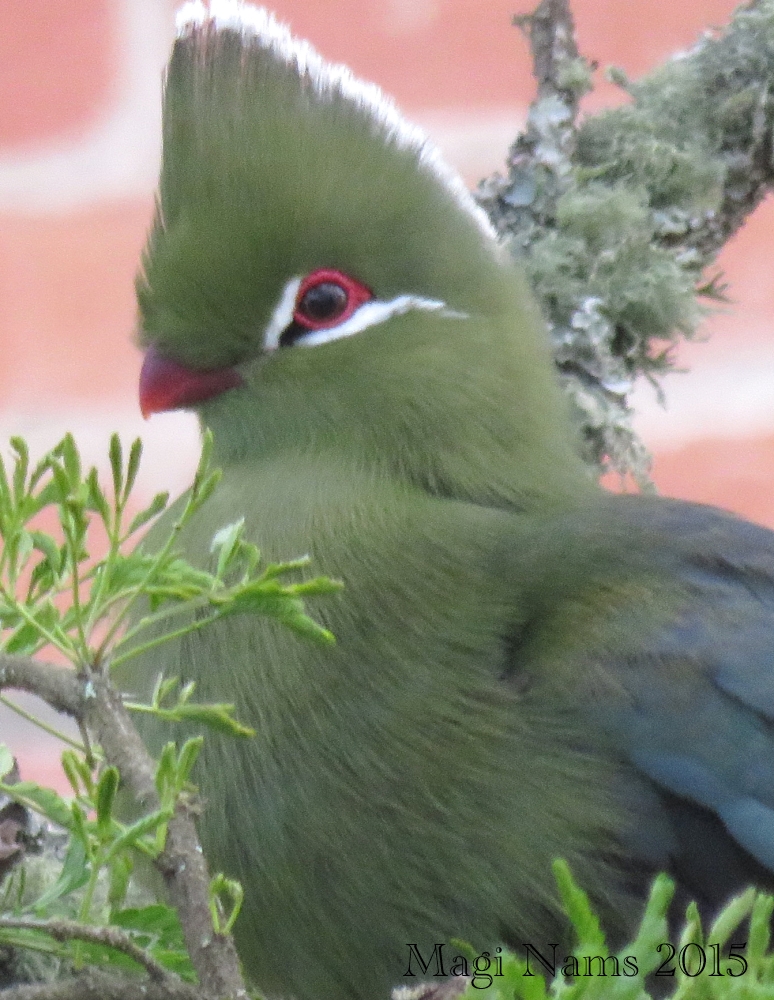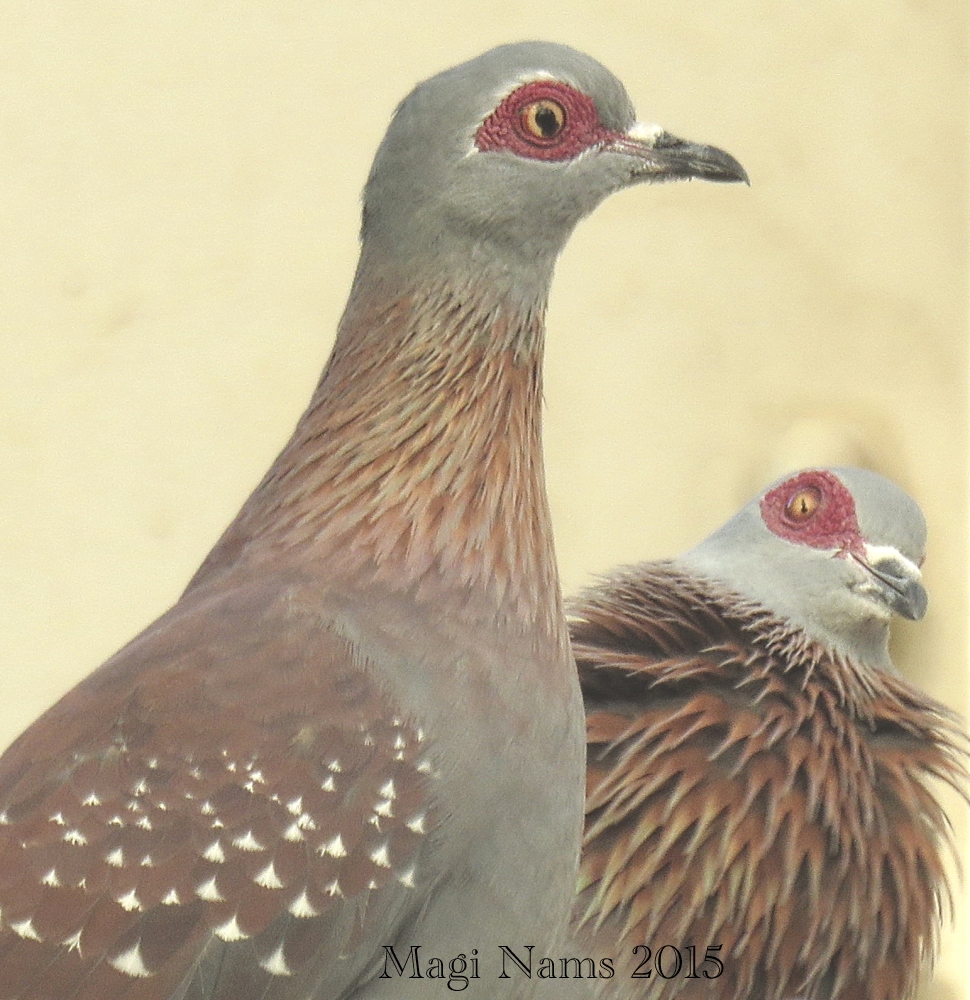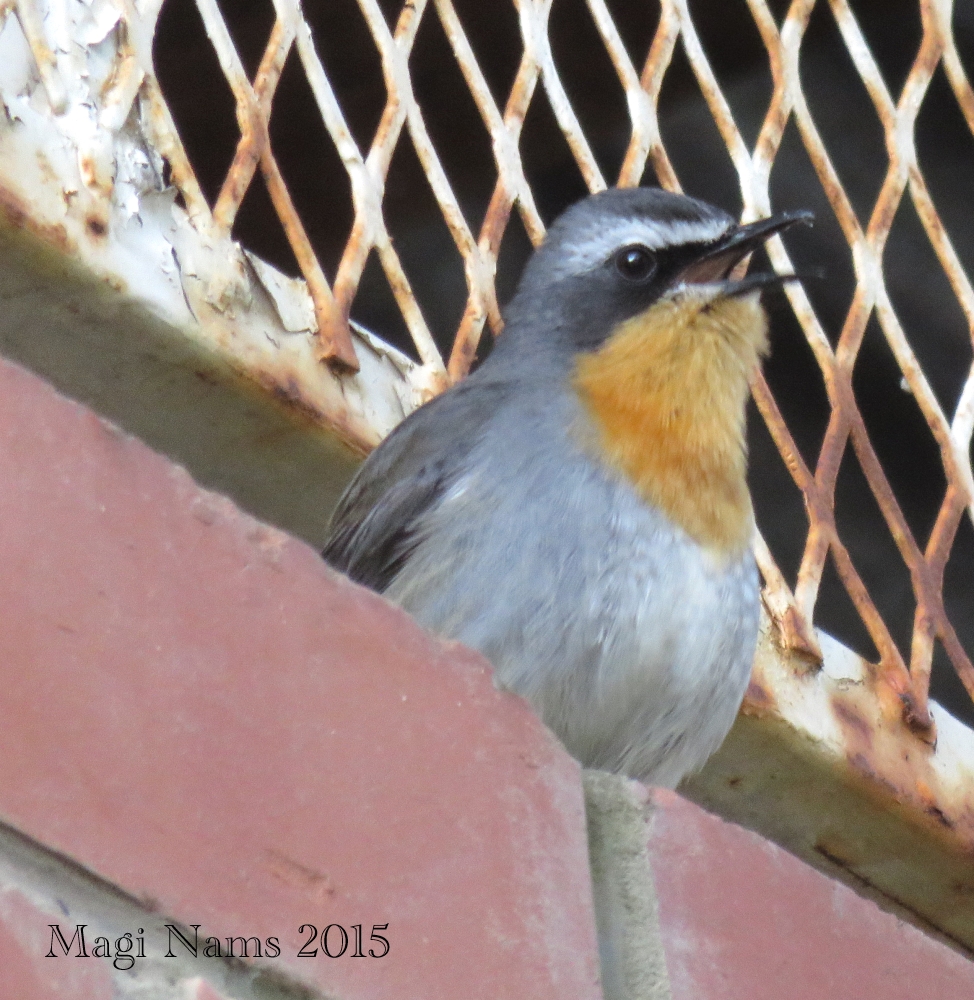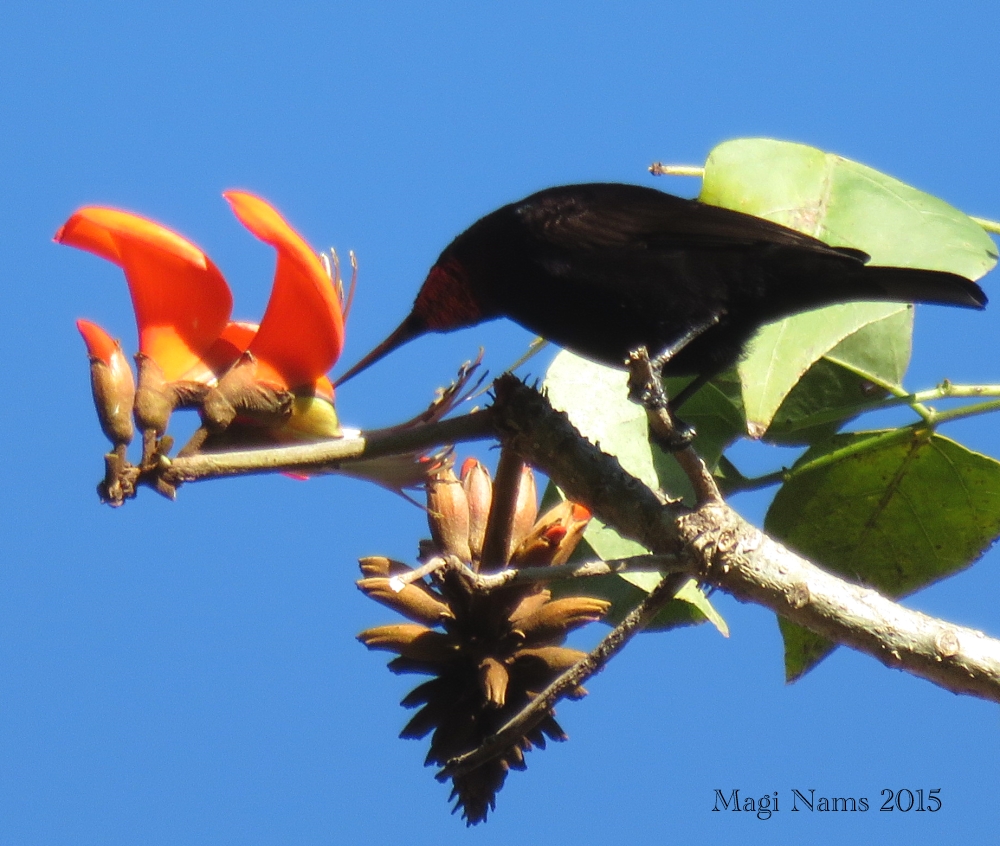Intriguing nooks and crannies and abundant gardens, plantings and playing fields offer excellent opportunities for birding at Rhodes University in Grahamstown.
Three months have passed since Vilis and I left our home in Nova Scotia, Canada, to spend six months in South Africa. We’ve spent much of that three-month period in Grahamstown, and in particular, on the Rhodes University campus, where we’re based. The sprawling campus, with its many intriguing nooks and crannies and its abundant gardens, plantings and playing fields, offers a variety of micro-habitats for birds. I’ve explored nearly every bit of campus while birding at Rhodes University and have so far recorded more than sixty species.
On my early morning birding walks, I scan King Field for Hadeda ibises and yellow-billed egrets. I hike uphill to the weedy patch beside the highest residences to look for streaky-headed seed-eaters and various species of canaries. I check out the lawn and shrubs adjacent to a ravine bordering campus and often spot fiscal flycatchers and seed-loving bishops and widowbirds.
Hedges and dense plantings yield sightings of thrushes and gloriously iridescent sunbirds. The tile-roofed buildings provide perches for speckled pigeons, laughing doves, red-winged and European starlings and rock martins. Shade trees are frequented by orioles and insane-sounding Cape weavers, the males of which build pendulous nests that dangle from the ends of the finest twigs.
In essence, anywhere you look on campus, you’ll find birds – a wonderful array of species having different shapes, sizes, colours and lifestyles.
Now that spring has arrived and migrants are returning to Eastern Cape, my tally of “lifers” increases nearly every day. Just this morning, I added greater striped swallow to my list. As well, the males of some resident species, such as southern red bishop, yellow bishop and red-collared widowbird, are moulting into their flamboyant breeding plumages. Although those males are rather untidy now, they’ll soon be a feast for the eye, as are so many other species I’ve seen while birding at Rhodes University.

